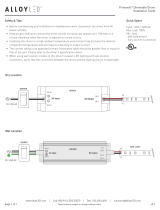1
CONTENTS
Safety Precautions ........................................................................................................................................... 2
TV Set switched off ........................................................................................................................................... 2
Measurements ................................................................................................................................................. 2
PERI -TV SOCKET ............................................................................................................................................ 2
SCART 1, SCART 2 .......................................................................................................................................... 2
INTRODUCTION .............................................................................................................................................. 2
POWER SUPPLY (SMPS) ................................................................................................................................. 3
IF PART ............................................................................................................................................................. 3-4
TUNER ............................................................................................................................................................. 4-5
SAW FILTERS ................................................................................................................................................... 5
DIGITAL TV SOUND PROCESSING ................................................................................................................. 5-6
DOLBY PRO LOGIC PROCESSOR ................................................................................................................. 6-7
HEADPHONE OUTPUT.................................................................................................................................... 7
VIDEO OUTPUT ................................................................................................................................................ 7-8
VIDEO INPUT AND OUTPUT SOURCE SWITCHING ...................................................................................... 8
VIDEO OUTPUT AMPLIFIER STAGE ................................................................................................................ 8-9
VERTICAL OUTPUT STAGE ............................................................................................................................. 9
MICROTEXT CONTROLLER ............................................................................................................................ 9-10
SERIAL ACCESS 32K EEPROM ...................................................................................................................... 10-11
DRAM ................................................................................................................................................................ 11
EPROM ............................................................................................................................................................. 11
100Hz FEATURE BOX ...................................................................................................................................... 12
VPC32X5 (VIDEO PROCESSOR) ............................................................................................................... 12-13
CIP3250 ...................................................................................................................................................... 13-14
SDA9400 ..................................................................................................................................................... 14-15
DDP3310 .................................................................................................................................................... 15-16
AK28 CHASSIS MANUAL ADJUSTMENTS PROCEDURE............................................................................... 17
PRELIMINARY ............................................................................................................................................. 17
SYSTEM VOLTAGE AJUSTMENT ................................................................................................................ 17
AFC ADJUSTMENT ..................................................................................................................................... 17
FOCUS ADJUSTMENT ................................................................................................................................17
SCREEN ADJUSTMENT ............................................................................................................................. 17
IF ADJUSTMENT FOR LMODE ................................................................................................................... 17
AK28 CHASSIS PRODUCTION MODE ADJUSTMENTS PROCEDURE ......................................................... 18
PRELIMINARY ............................................................................................................................................. 18
HORIZONTAL AND VERTICAL GEOMETRY ALIGNMENTS ........................................................................ 18
V-SHIFT ....................................................................................................................................................... 18
V-SIZE .......................................................................................................................................................... 18
H-SHIFT ...................................................................................................................................................... 18
H-SIZE ......................................................................................................................................................... 18
S-COR ......................................................................................................................................................... 18
LINRT .......................................................................................................................................................... 18
ANGLE ........................................................................................................................................................ 18
BOW ... ........................................................................................................................................................ 18
TRPEZ ......................................................................................................................................................... 18
PARAB ......................................................................................................................................................... 18
U.COR ......................................................................................................................................................... 19
L.COR ......................................................................................................................................................... 19
VIDEO ALIGNMENTS ........................................................................................................................................ 19
RGn, GGn, BGn,:WHITE BALANCE ADJUSTMENT .................................................................................... 19
RRf, GRf, BRf .............................................................................................................................................. 19
YDF . ........................................................................................................................................................... 19
AGC . .......................................................................................................................................................... 19
TLAN . .......................................................................................................................................................... 19
APS . ........................................................................................................................................................... 19
T_T ............................................................................................................................................................ 19
T_P ............................................................................................................................................................ 19
EXT3 ............................................................................................................................................................ 19
CLT ............................................................................................................................................................ 19
SERVICE ALIGNMENTS ................................................................................................................................... 20
IMPORTANT ................................................................................................................................................ 20
ADJUSTMENTS GROUOP.......................................................................................................................... 20
OPTIONS GROUP ...................................................................................................................................... 20
SYSTEM GROUP ........................................................................................................................................ 20
GENERAL BLOCK DIAGRAM OF CHASSIS AK28 ........................................................................................... 21























